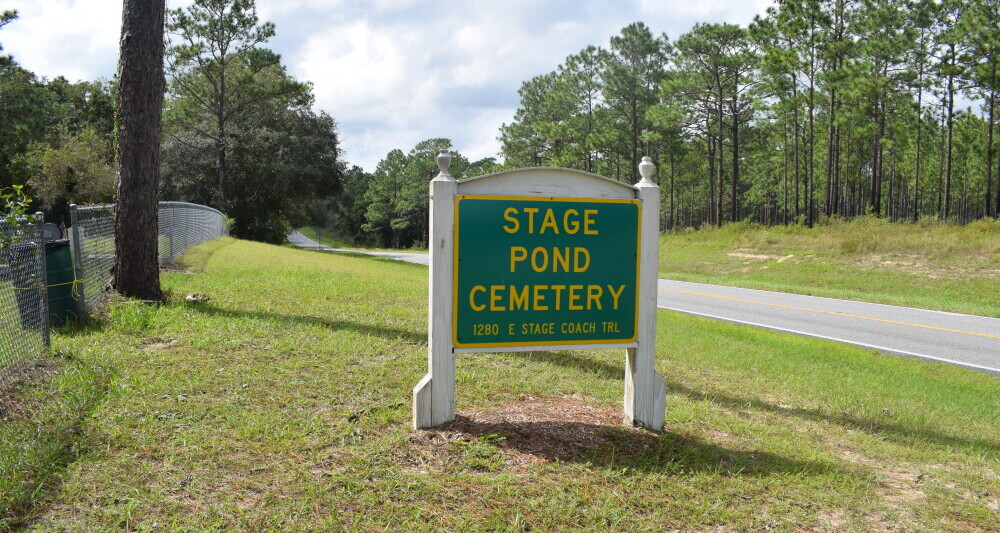
In the late 1800s, many small towns began to pop up across Citrus County, Florida, driven by the rise of citrus farming. Settlers flocked to the area, planting citrus trees and building new lives around agriculture. However, the big freeze of 1894-95 devastated the industry, wiping out the citrus groves that sustained these towns. Many of these communities began to dwindle from then on, eventually fading into obscurity. Among these lost towns is Stage Pond, a small ghost town with a history dating back to the early 19th century.
Early Beginnings and the Rise of the Stagecoach Era
Stage Pond in Citrus County dates back to the early 1800s when settlers were drawn to the area by the fertile land and its namesake pond, which provided a vital water source. Prominent families such as the Sparkmans, Sadlers, Leggettes, Casons, and Rooks, primarily farmers, were among the early pioneers. By 1885, the town’s population had reached a modest twelve people.
Florida’s stagecoach routes began flourishing in the mid-1800s after the U.S. acquired Florida from Spain in 1821. With no viable steamship options for interior mail delivery, the U.S. Postal Service relied on stagecoaches to transport mail, packages, and passengers between growing towns and settlements. Stagecoaches carried six to nine passengers at rates of 10 to 15 cents per mile, making them a crucial mode of transportation.
A typical stagecoach was a wooden box on four wheels drawn by two to six horses. While on the road, stops at stagecoach posts where to swap out for fresh horses for the journey were common. Besides walking or traveling by wagon, stagecoaches were the only efficient means of long-distance travel in Florida during this era.
Stage Pond: A Bustling Stagecoach Stop
In 1879, Mr. Stanley ran the new Stage Pond post office and the town’s general store. The town grew around its turpentine still, operated by Mr. Smith, and a convict labor camp of 25 to 35 prisoners. These convicts even entertained the townspeople, as locals reportedly gathered to watch them play baseball.
By the mid-1800s, Stage Pond had become a critical stop on the stagecoach route connecting Ocala to Tampa. Its strategic location brought traffic, commerce, and communication to the town, helping it grow to a population of 250 by 1885. At this time, Stage Pond had a post office, a general store, a school, a turpentine still, a convict camp, and, as is typical of ghost towns, a cemetery.

Civil War and the Decline of the Stagecoach
During the Civil War, Stage Pond was a key transportation route for the Confederate Army due to its proximity to the Withlacoochee River and important trade routes. However, as railroads began to crisscross Florida after the war, the stagecoach era declined. Stage Pond held on for a while, but the invention of the automobile and the rise of the railroad rendered stagecoaches obsolete by the early 1900s.
The Phosphate Boom and Bust
Despite the decline of the stagecoach, Stage Pond had one last boom during the phosphate mining rush of the late 1800s and early 1900s. Phosphate was a valuable resource used in fertilizers and industrial applications, and mining brought new life to the area. Railroads were built to transport phosphate from mines in nearby towns like Floral City and Homosassa.
However, this boom could have been more-lived. The local economy began to suffer again after phosphate mining dwindled. Stage Pond’s fate as a ghost town was sealed with the citrus industry decimated by the 1895 freeze and phosphate mining tapering off.
Stage Pond Cemetery: A Quiet Reminder of the Past
Today, the Stage Pond Cemetery, established in the early 1900s, is one of the few remnants of the town’s bustling past. The cemetery serves as a haunting reminder of those who lived and died in Stage Pond, with some gravestones weathered and barely legible. The first recorded burial was Walter Renfroe in 1901, but it’s likely that many other unmarked graves exist, having been consumed by nature over time.
Some visitors have reported eerie experiences in the cemetery, such as hearing voices, feeling cold spots, and seeing figures. Could the spirits of Stage Pond’s pioneers be lingering in this forgotten place? While I didn’t experience anything supernatural during my visit, it’s hard to ignore the rich history that surrounds this ghost town.

A Hike Through History
Exploring the Withlacoochee Forest near the cemetery, I was hopeful I might stumble upon some of the town’s old foundations or even the schoolhouse that once stood here. According to a 1987 article from the St. Petersburg Times, a student from Pasco-Hernando Community College had reported seeing remnants of the old schoolhouse. However, I could only find a few concrete fragments, and it was hard to tell if they were part of the original town or just debris left behind.
While much of the town has been swallowed by time and nature, the cemetery remains relatively well-preserved. Walking through the gravestones, I was struck by how much care had been taken to maintain them despite their age. Many headstones looked newer than I expected, likely replacements for older, crumbling stones. Some even featured personalized murals, which I found to be a touching tribute to those buried there.
To see all of the pictures I took while exploring this area, click here.
Stage Pond Today
Although its heyday has long passed, Stage Pond is a fascinating historical site for those interested in Florida’s early settlements. Remnants of the old stagecoach roads can still be found, and the nearby cemetery offers a glimpse into the lives of those who lived in this once-thriving community.
Whether you’re a history buff or enjoy the mystery of Florida’s ghost towns, Stage Pond is well worth the visit. And who knows? You might encounter a ghost or two if you visit the cemetery at night.
If you see this after your page is loaded completely, leafletJS files are missing.

